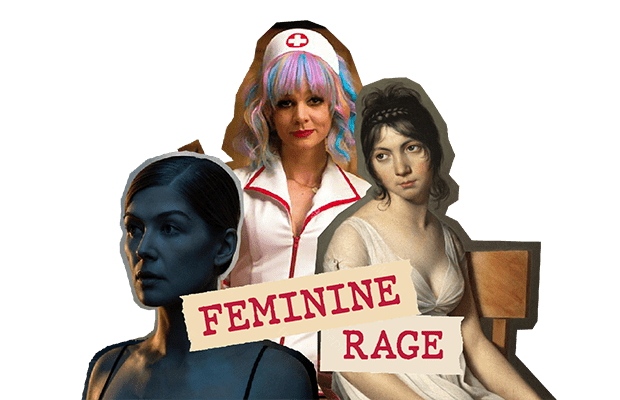‘Feminine rage’ movies. The ‘good for her’ cinematic universe. ‘Gaslight, gatekeep, girlboss’ literature. If you frequent the same corners of the internet that I do, regularly looking for recommendations of what to read and watch, you might have noticed these ‘genres’ slowly appearing.
Unlike science fiction, romance, fantasy, this genre does not simply do what it says on the tin, its content — and its motive — is far more complicated than that. This begs a number of questions. What defines ‘feminine rage’ in media? Where did it come from? And why — across the world — are so many women connecting with it on such a deep level?
Whilst there are distinct nuances between the genres of ‘feminine rage,’ ‘good for her,’ and ‘gaslight, gatekeep, girlboss’ media, for the purposes of this article, it is worth examining them as a whole.
What is the ‘feminine rage’ genre?
‘Feminine rage’ as a genre refers to a collection of works that feature female characters (predominantly written or produced by female authors and artists) engaging in taboo or socially unexpected actions – most often violence.
The violence depicted in these works can be classified into three categories.
The first category is rage against the patriarchy or men. This is essentially the revenge plot. These are the narratives where the protagonist undertakes violence or revenge against another individual, usually a man, who has committed some kind of harm towards them. Examples include Promising Young Woman and Gone Girl, where the female main characters enact revenge plots involving psychological and physical violence.
The second kind is general violence. This works where women participate in or perpetrate significant violence, but without the ideological backing of the first category. Notable films in this category include Midsommar.
The final category is that of self inflicted violence. These are stories where a woman or group of women enact various types of violence, from the physical to the psychological, upon themselves. Examples include Bunny by Mona Awad, a novel where a group of female university students engage in ritualistic sacrifice, or My Year of Rest and Relaxation by Otessa Moshfegh, in which a young woman isolates and drugs herself into perpetual sleep.
Where did it come from?
In the media we consume, we are typically shown violence perpetuated against women. We are desensitised to it. Crime procedural shows such as Law & Order and Criminal Minds — a mainstay of our television screens — feature the violent murder (and, invariably, sexual assault) of women week after week, for the purpose of entertainment.
In fact, in some genres, violence against women is a necessity to be seen as ‘accurate’. Period pieces and fantasy shows such as Game of Thrones thrust graphic sexual violence to the forefront of our screens, with female characters’ story arcs revolving solely around this violence.
When critics claim that these scenes are gratuitous, or unnecessary, others argue that this is simply in the name of ‘historical accuracy.’ As if in television shows that prominently feature dragons, we could not suspend our disbelief to allow fewer women to be despicably assaulted and murdered.
Simply put, when we turn on our television screens or crack open the spine of a novel, we often expect some kind of violence against a woman to appear, almost always at the hands of a male character, or male author. This experience, for many female audiences, is horrific and alienating. This is not the stuff of fantasy that one can simply turn off or ignore, but a real and oppressive fear that is present in many women’s lives.
With so much violence being perpetrated against women by men, it seems only natural that people are looking for stories where women are the ones in control.
Why do we connect with it?
In all the types of violence that we see so often on our screens, female characters are stripped of their agency. When we are so used to seeing representations of women as helpless and harmed, seeing women take control of violence can prompt a cathartic experience.
Bloody revenge plots become a fight against the oppression that has filled our screens and novels for too long. The unfamiliar subversion of the expected role of women as meek, kind and caring is entrancing. In these texts, women are now agents of the story, in control of what happens. They make the striking move of being objects, rather than subjects, of violence.
It is exhausting to keep seeing women have to be good in the face of constant violence. It is freeing to see them be heinous. Let them rage on.





